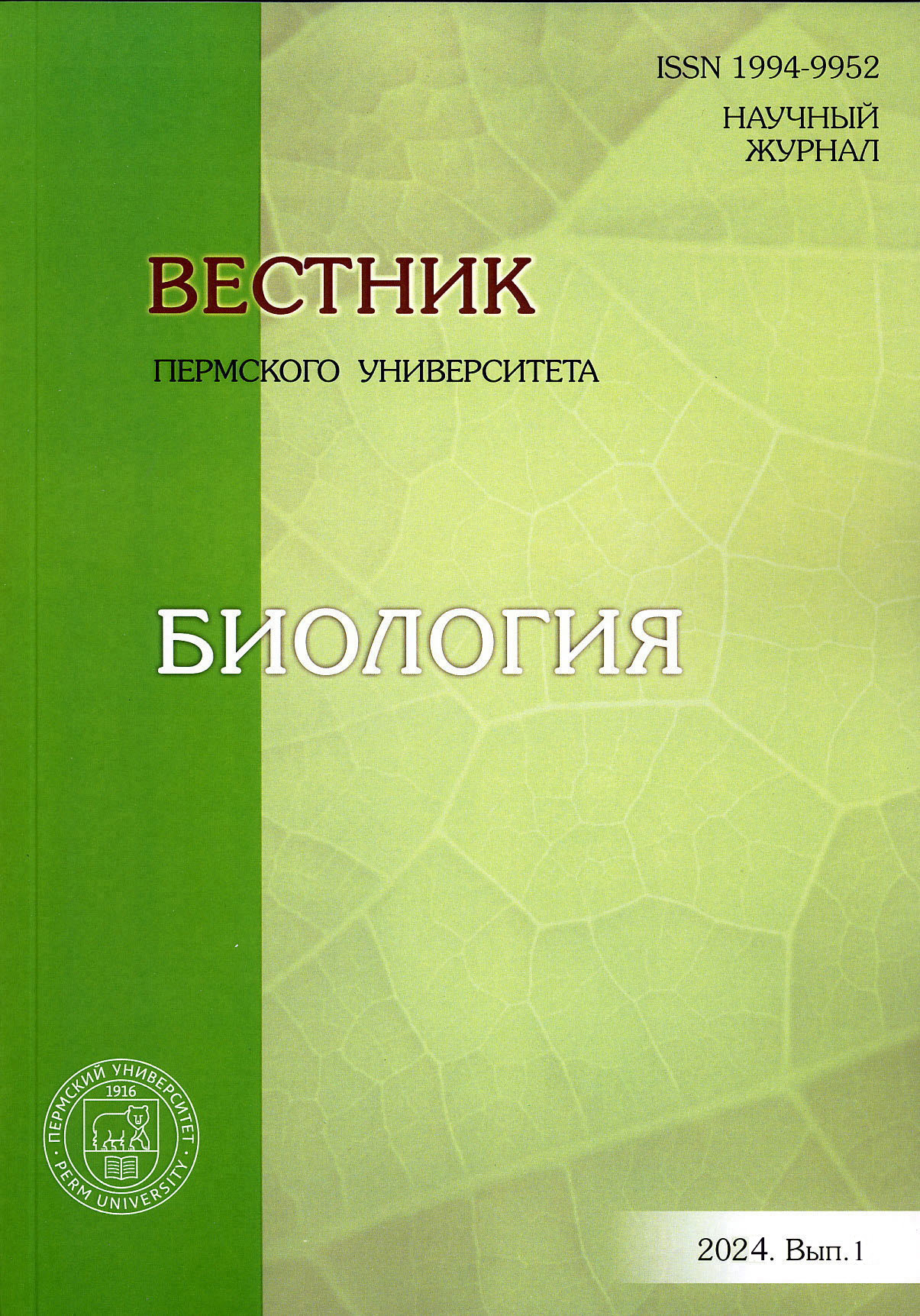NK-клетки, предобработанные эстриолом и клетками комменсальной флоры, регулируют созревание Treg и Th17 из CD4+ лимфоцитов у больных рассеянным склерозом и здоровых доноров
##plugins.themes.bootstrap3.article.main##
Аннотация
##plugins.themes.bootstrap3.article.details##
Лицензионный договор на право использования научного произведения в научных журналах, учредителем которых является Пермский государственный национальный исследовательский университет
Текст Договора размещен на сайте Пермского государственного национального исследовательского университета http://www.psu.ru/, а также его можно получить по электронной почте в «Отделе научных периодических и продолжающихся изданий ПГНИУ»: YakshnaN@psu.ru или в редакциях научных журналов ПГНИУ.
Библиографические ссылки
Некрасова И.В., Ширшев С.В. Женские половые стероидные гормоны в регуляции ферментативной активности нейтрофилов // Доклады Академии наук. 2013. Т. 453, № 6. С. 690–693. DOI: 10.7868/S0869565213360231.
Ширшев С.В., Некрасова И.В. Комплексное исследование иммуномодулирующей активности эстриола // Иммунология. 2011. Т. 32, № 2. С. 72–74.
Ширшев С.В. и др. Влияние хорионического гонадотропина и эстриола на фенотип и функциональную активность NK-клеток // Физиология человека. 2016. Т. 42, № 5. С. 102–107. DOI: 10.7868/S0131164616050143.
Ширшев С.В. и др. Участие микроРНК в гормональных механизмах регуляции функций NK-клеток // Доклады Академии наук. 2017. Т. 474, № 1. С. 123–127. DOI: 10.7868/S0869565217130254.
Ширшев С.В. и др. Гормональная регуляция дифференцировки дендритных клеток тимуса // Бюллетень экспериментальной биологии и медицины. 2018. Т. 165, № 2. С. 193–197.
Aziz N., Bonavida B. Activation of Natural Killer Cells by Probiotics // For Immunopathol. Dis. Therap. 2016. Vol. 7, № 1–2. P. 41–55. DOI: 10.1615/ForumImmunDisTher.2016017095.
Fu B. et al. Natural killer cells promote immune tolerance by regulating inflammatory TH17 cells at the human maternal-fetal interface // Proc. Natl. Acad. Sci. USA. 2013. Vol. 110, № 3. P. E231–240. DOI: 10.1073/pnas.1206322110.
Gross C.C. et al. Alemtuzumab treatment alters circulating innate immune cells in multiple sclerosis // Neurol. Neuroimmunol. Neuroinflamm. 2016. Vol. 3, № 6. P. e289. DOI: 10.1212/NXI.0000000000000289.
Harbo H.F., Gold R., Tintore M. Sex and gender issues in multiple sclerosis // Archive of Therapeutic Advances in Neurological Disorders. 2013. Vol. 6, № 4. P. 237–248. DOI: 10.1177/1756285613488434.
Hepworth M.R. et al. Immune tolerance. Group 3 innate lymphoid cells mediate intestinal selection of commensal bacteria-specific CD4⁺ T cells // Science. 2015. Vol. 348, № 6238. P. 1031–1035. DOI: 10.1126/science.aaa4812.
Jadidi-Niaragh F., Mirshafiey A. Th17 cell, the new player of neuroinflammatory process in multiple sclerosis // Scandinavian Journal of Immunology. 2011. Vol. 74, № 1. P. 1–13. DOI: 10.1111/j.1365-3083.2011.02536.x.
Kase N.G., Reyniak J.V. Endocrinology of pregnancy // Mount Sinai Journal of Medicine. 1985. Vol. 52, № 1. P. 11–34.
McDonald W.I. et al. Recommended diagnostic criateria for multiple sclerosis: guidelines for the International Panel on diagnosis of multiple sclerosis // Annals of Neurology. 2001. Vol. 50, № 1. P. 121–127. DOI: 10.1002/ana.1032.
Nekrasova I., Shirshev S. Estriol in regulation of cell-mediated immune reactions in multiple sclerosis // Journal of Neuroimmunology. 2020. Vol. 349C. P. 577421. DOI: 10.1016/j.jneuroim.2020.577421.
Neuteboom R.F. et al. Pregnancy in multiple sclerosis: clinical and self-report scales // Journal of Neurology. 2012. Vol. 259. P. 311–317. DOI: 10.1007/s00415-011-6186-7.
Papenfuss T.L. et al. Estriol generates tolerogenic dendritic cells in vivo that protect against autoimmunity // Journal of Immunology. 2011. Vol. 186, № 6. P. 3346–3355. DOI: 10.4049/jimmunol.1001322.
Pelfrey C.M. et al. Effects of sex hormones on costimulatory molecule expression in multiple sclerosis // Journal of Neuroimmunology. 2005. Vol. 167, № 1–2. P. 190–203. DOI: 10.1016/j.jneuroim.2005.06.014.
Sicotte N.L. et al. Treatment of multiple sclerosis with the pregnancy hormone estriol // Annals of Neurology. 2002. Vol. 52, № 4. P. 421–428. DOI: 10.1002/ana.10301.
Soldan S.S. et al. Immune modulation in multiple sclerosis patients treated with the pregnancy hormone estriol // Journal of Immunology. 2003. Vol. 171. P. 6267–6274. DOI: 10.4049/jimmunol.171.11.6267.
Vacca P. et al. Crosstalk between decidual NK and CD14+ myelomonocytic cells results in induction of Tregs and immunosuppression // Proc. Natl. Acad. Sci. USA. 2010. Vol. 107, № 26. P. 11918–11923. DOI: 10.1073/pnas.1001749107.
von Burg N. et al. Maintenance of Immune Homeostasis through ILC/T Cell Interactions // Front Immunol. 2015. Vol. 6. P. 1–13. DOI: https://doi.org/10.3389/fimmu.2015.00416.
Voskuhl R.R. et al. Estriol combined with glatiramer acetate for women with relapsing-remitting multiple sclerosis: a randomised, placebo-controlled, phase 2 trial // Lancet Neurology. 2016. Vol. 15, № 1. P. 35–46. DOI: 10.1016/S1474-4422(15)00322-1.
Xu L., Kitani A., Strober W. Molecular mechanisms regulating TGF-βІ-induced Foxp3 expression // Mu-cosal Immunology. 2010. Vol. 3, № 3. P. 230–238. DOI: 10.1038/mi.2010.7.




